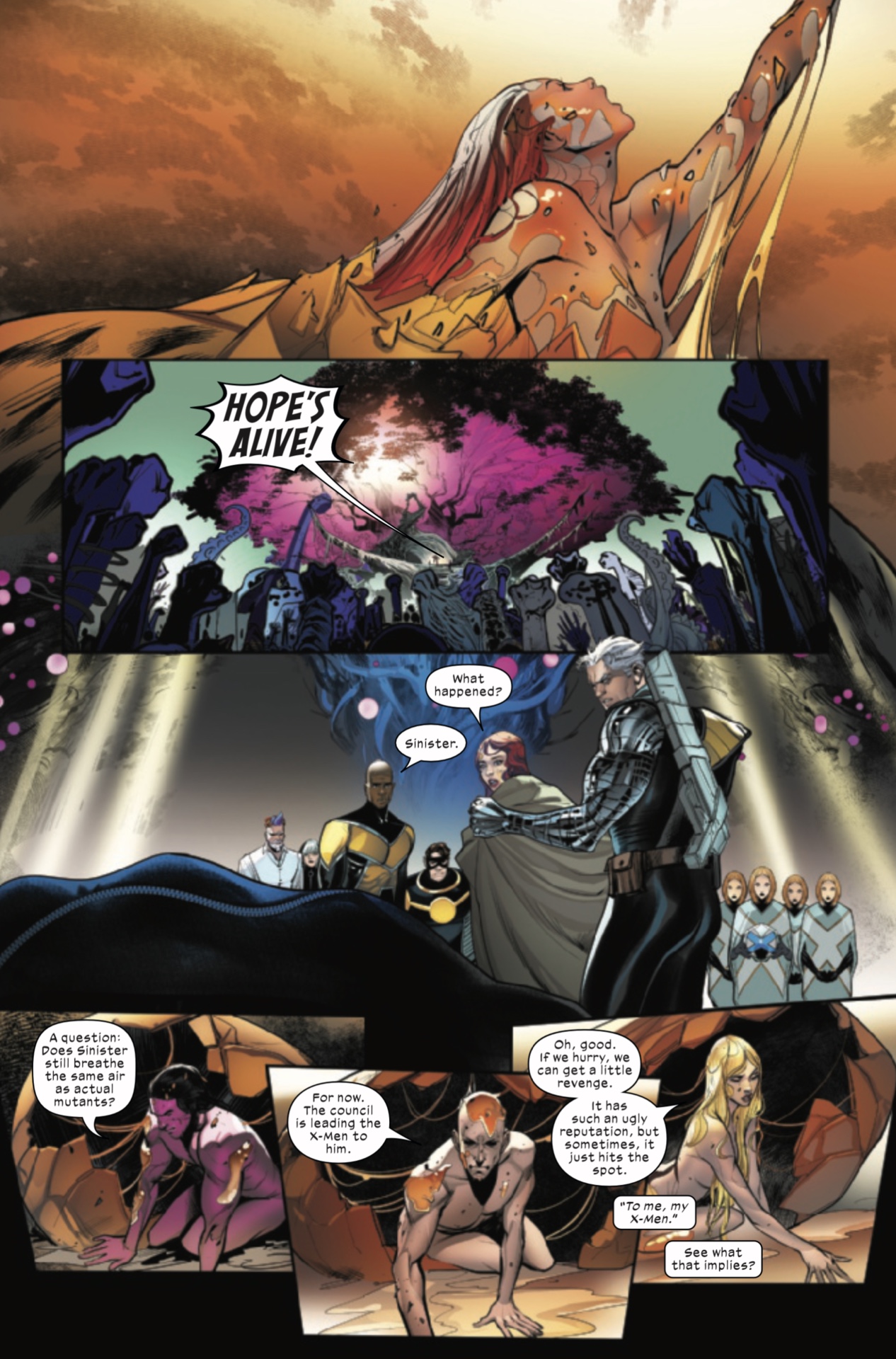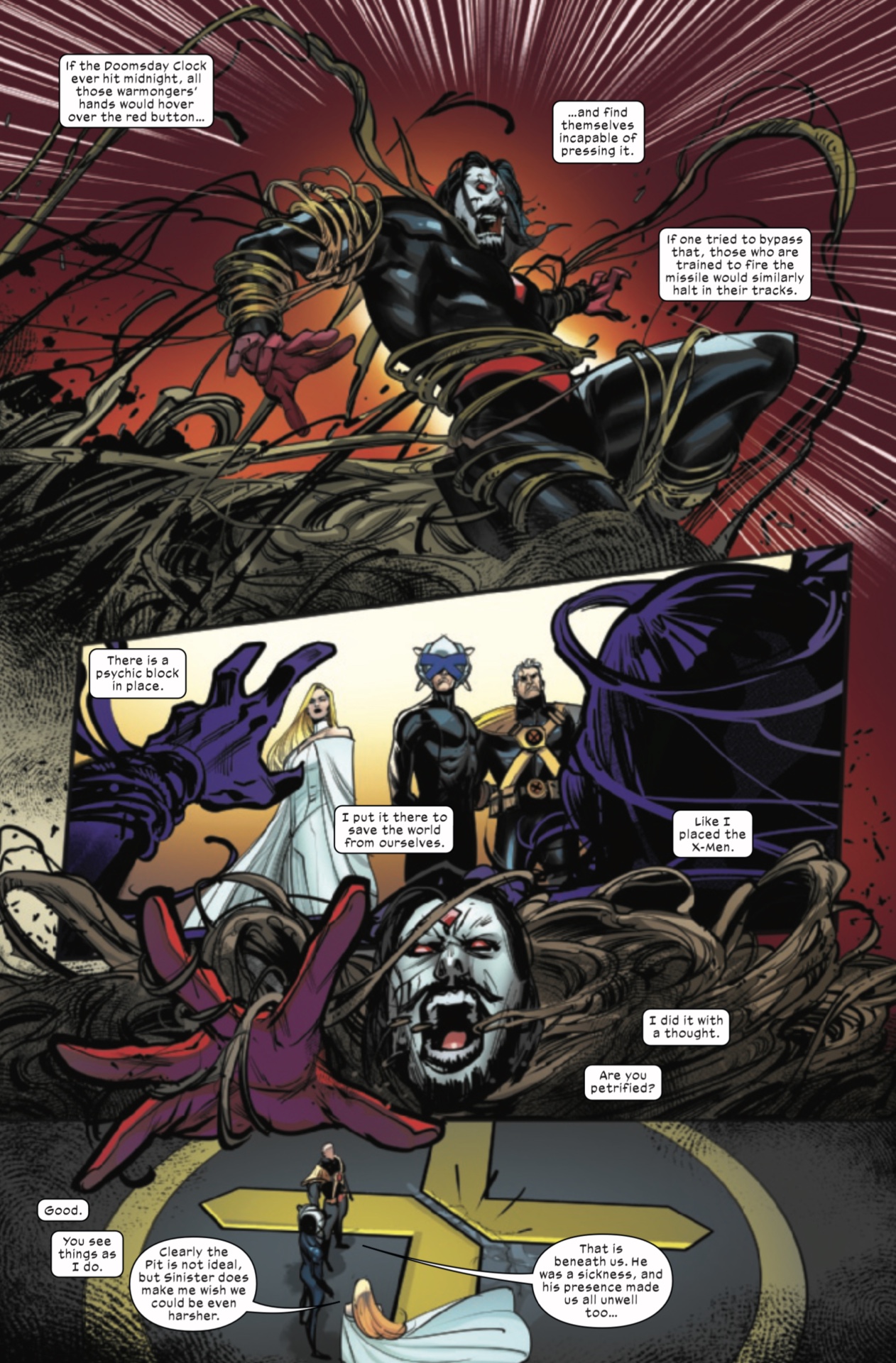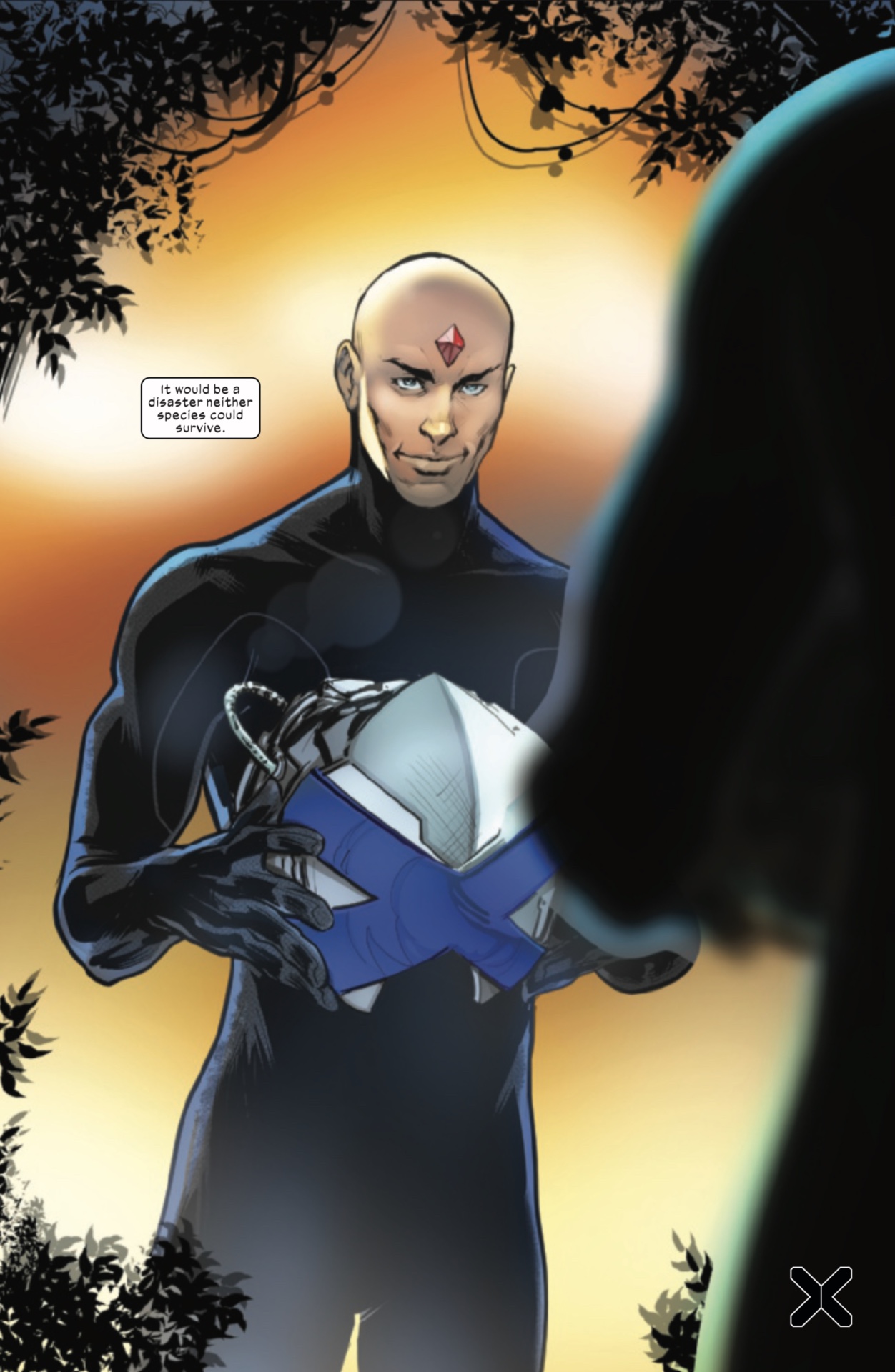Sins of Sinister may be something totally different than what we expect
Immortal X-Men #10 sets up Sins of Sinister with a shocking revelation that could change the entire event

Is Sins of Sinister everything it has seemed to be in its lead-up?
The upcoming X-Men event has been billed as a revisiting of the concept of 1995's Age of Apocalypse event in which the entire X-Men line was temporarily suspended and replaced with a whole slate of titles set in an alternate reality ruled by the villain Apocalypse.
Similarly, Sins of Sinister has been advertised as a glimpse into a world ruled by Mister Sinister, the mad mutant geneticist whose cloning technology has been a key part of the mutant resurrection process - until now.
Immortal X-Men #10 from writer Kieron Gillen, artists Lucas Werneck and David Curiel, and letterer Clayton Cowles finally addresses Sinister's place on Krakoa and his behind-the-scenes machinations involving cloning Moira MacTaggert to steal her reality rebooting power and forces him to pay for his crimes against mutantkind.
But the final page calls into question almost everything we know about Krakoa right now, and also seems to set up the actual circumstances of Sins of Sinister - and it may not be what we think.
Spoilers ahead for Immortal X-Men #10

Immortal X-Men #10 opens with the precarious resurrection of Hope, whose powers are crucial to making mutant resurrection possible, and who was killed by Sinister along with most of the Quiet Council in the preceding issue.
Hope's resurrection is successful, allowing the easier resurrection of the rest of the Quiet Council, who waste no time sending the X-Men to capture Sinister, who is then immediately sentenced to the abyss of the Pit, the place where mutants who break Krakoan law are sent for all eternity (at least in theory).
Get the best comic news, insights, opinions, analysis and more!
Through it all, Xavier has a running narration explaining how easy it would be for someone with his power (meaning Xavier himself) to do real harm to the world, implying that he assembled the original X-Men and even their 'Giant-Size' X-Men replacements in order to defeat him (Xavier) if he ever became evil.

(He actually did once in the '90s as Onslaught, and it was really, really bad for the Marvel Universe. And his powers were once stolen by the Red Skull for several years, ultimately resulting in Steve Rogers turning evil and almost conquering the world.)
In the final scene, Xavier, alone in his chamber, removes his helmet, revealing a Sinister-style red diamond implanted in his forehead.
Does this mean Xavier has been taken over by Sinister somehow? Or is it the other way around?

Whichever way the wind is blowing, this calls into question everything we know about Sins of Sinister. With Sinister himself now apparently in the Pit, is the Xavier-Sinister his backup plan?
Or is Xavier himself about to use some aspect of Sinister's technology to recreate the world for himself?
We'll find out more when Sins of Sinister #1 arrives on February 25.
Stay up to date on all the new X-Men comics Marvel has planned for release.
I've been Newsarama's resident Marvel Comics expert and general comic book historian since 2011. I've also been the on-site reporter at most major comic conventions such as Comic-Con International: San Diego, New York Comic Con, and C2E2. Outside of comic journalism, I am the artist of many weird pictures, and the guitarist of many heavy riffs. (They/Them)



